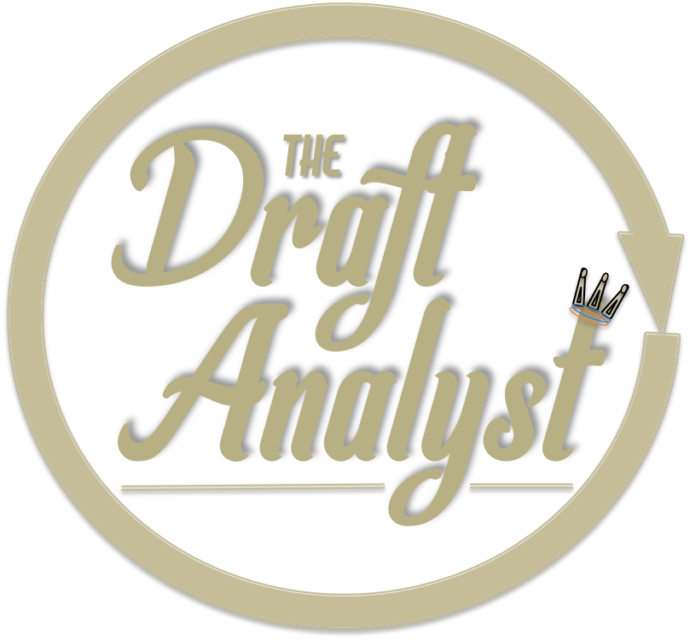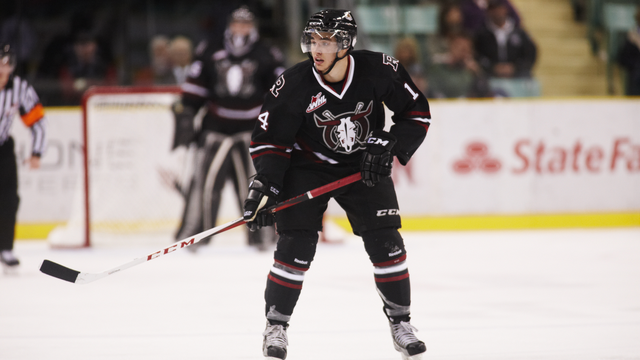 92. C/RW Oskar Steen (Farjestad BK, SHL):
92. C/RW Oskar Steen (Farjestad BK, SHL): Quick winger with a knack for burying the puck who played well in a brief stint with Farjestad’s senior club. Steen is a hard worker who can play on both the power play and the penalty kill, and you can fit him into the same category as fellow draft-eligible Swedish sparkplugs Carl Grundstrom and Jesper Bratt. The biggest knock on Steen is that he isn’t very tall (5’9), but he’s strong and can play a physical, in-your-face style, especially on the forecheck. He was superb at the Five Nations tournament in November, and made big plays at the U18 world championship in April.
 *93. (EDM) RW Maxime Fortier (Halifax, QMJHL)
*93. (EDM) RW Maxime Fortier (Halifax, QMJHL): Relentless skill forward with blinding speed and a very good shot who carried the Mooseheads after star winger Timo Meier was moved to Rouyn-Noranda. Fortier led his club in scoring with 31 goals and 77 points, playing top-line minutes alongside pivot Otto Somppi. The Ducks could use size on the flanks, but much like Alex DeBrincat, Fortier is too talented a finisher to let an inch or two get in the way of drafting him.

*
94. (VAN) C/LW Jordy Stallard (Calgary, WHL): The Hitmen had a bit of a rebuilding year, which gave this versatile forward the chance to play all over their lineup, to include periods of top-line duty. He played wing most of last season, but he saw more time at the pivot plus a consistent role on the power play in 2016. Stallard can play a physical game, using his NHL build (6’2, 190) to lean on defenders and bang around on the forecheck. His best assets are a pro shot and quick release – he can wire it off of any pass regardless of quality. Stallard’s speed is above average, but his size coupled with the fact that he scored 21 goals without the benefit of playmaking linemates makes him a good sleeper pick in the fourth round.
 *95. (CBJ) LHD Josh Mahura (Red Deer, WHL):
*95. (CBJ) LHD Josh Mahura (Red Deer, WHL): A top defense prospect before an early-autumn knee injury cost him the entire regular season, Mahura looks like he’s rebounded nicely, helping the Rebels in their march to the Memorial Cup and playing on their second pairing. He is a mobile-two way defender with average size (6’0, 180), but he’s known for a hard shot and ability to fend off pressure with smart plays and sound instincts. Mahura, who played for Team Canada at the 2015 Ivan Hlinka and was Red Deer’s 2nd round pick in the 2013 WHL Bantam Draft, is a safe pick whose upside is between a fourth to sixth defenseman.
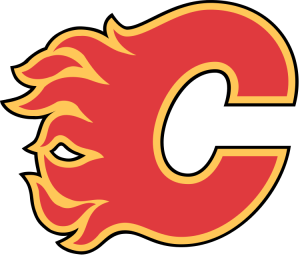 96. LW Tim Gettinger (Sault Ste Marie, OHL):
96. LW Tim Gettinger (Sault Ste Marie, OHL): Gettinger isn’t your typical power forward in that he loves to handle the puck and chooses a deliberate playmaker’s approach rather than mirror the lumbering dump-and-chasers of yesteryear. A native of Ohio, the 6’6 Gettinger was expected to do more for a Greyhounds squad hit hard by graduations, and examples of being the dominant player on the ice were spread thin throughout his season. Still, he’s pretty nimble on his feet for such a big body, which he uses to his advantage during board battles. There’s always the chance his skill-size combination bumps him up to an earlier round, but he is a project forward nonetheless.
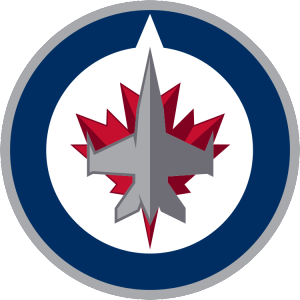 97. LHD Vojtech Budik (Prince Albert, WHL):
97. LHD Vojtech Budik (Prince Albert, WHL):In a draft replete with two-way defenders, it would behoove teams to take a stab at the bigger models, especially if they can skate. Budik had a rather successful rookie season with Prince Albert after he was the 17th overall pick in last year’s CHL Import Draft. The stats may not tell a whole bunch (16 points in 70 games), but he was one of the Raiders’ more dependable blueliners defending from the dots down, and served as a crease-clearer on the penalty kill, which was somewhat surprising since he was expected to support the offense. Budik is a very good skater who lacks creativity, but the fact that he can defend and take the puck up ice makes him an attractive option.
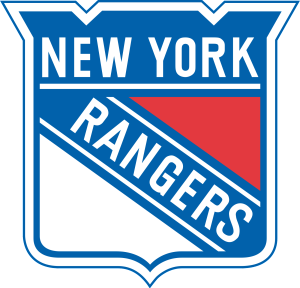 *98. (ARI) LHD Max Lajoie (Swift Current, WHL):
*98. (ARI) LHD Max Lajoie (Swift Current, WHL): The Rangers lack a pure puck mover, and Lajoie is one of the better options in that regard. Tall and lean with an offense-first mindset, he shook off a horrid first half to emerge as one of the WHL’s most productive defenders, finishing with 24 points in his last 27 games. Lajoie is a graceful skater with excellent vision and owns an above-average shot. At 6’1, 183 pounds, he can stand to build up his body without leaking mobility, and and possibly develop into the power play quarterback the Rangers have lacked for decades. Lajoie’s defensive game was at times disconcerting, but he improved while taking on added responsibility.
 99. G Mikhail Berdin (Russia U18, MHL):
99. G Mikhail Berdin (Russia U18, MHL):It may have taken him a while, but Berdin played well enough to vault past incumbent starter Vladislav Sukhachev as the Russian U18 squad’s top backstopper. Granted, he missed the U18 world championship because of team-wide doping practices, but he distinguished himself at several international tournaments as a netminder with NHL potential. An aggressive goalie with ideal size for tougher levels of play, the 6’2 Berdin is quick to his feet while flashing a plus glove hand. The meldonium accusations may sting him in terms of actual draft positioning, but he’s easily the best goalie available at this stage of the draft.
 100. C Kristian Reichel (Litvinov, Extraliga):
100. C Kristian Reichel (Litvinov, Extraliga): Reichel is a two-way playmaking pivot with top-six potential who earned his way to a promotion in the Czech Republic’s senior circuit. He’s a good skater with a decent first step whose agility helps him while killing penalties, and he makes good reads to help spearhead a counterattack. Reichel, the son of former NHL’er Robert Reichel, anchored the National Team’s offense in several events and was usually on the ice with the top power play or penalty killing unit. He’s very good on faceoffs and has the kind of size (6’1) conducive to three-zone play in the NHL.
 *101. (COL) G Tyler Parsons (London, OHL):
*101. (COL) G Tyler Parsons (London, OHL):It’s easy to dismiss a goalie’s mind-numbing win totals if you think he’s a product of a system rather than the other way around. In the case of the Michigan-born Parsons, the OHL-champion Knights are undoubtedly lucky to have such a stellar netminder to count on when times are tough. Not every game began with a quick 3-0 lead, so it was usually up to Parsons to either steal a win or make a critical save early and allow the Knights to blow games wide open. A stand-up goalie with swift reset ability, he makes big saves in late-game situations and can move the puck into a scoring chance when opponents are snoozing.
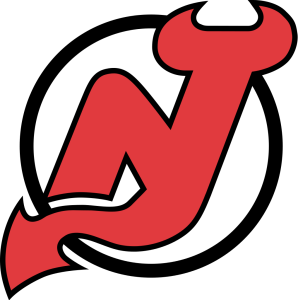 102. LW Ross Colton (Cedar Rapids, USHL):
102. LW Ross Colton (Cedar Rapids, USHL): Late 1996-born New Jersey native who was the USHL runner up in both goals (35) and points (66). He plays a heavy, menacing game while contributing top-line production in any situation. Colton, who’s headed to the University of Vermont, was the MVP of the 2016 USHL Top Prospects Game and scored four goals in five games for Team USA at the 2015 World Junior “A” Challenge. He’s technically a double overager and is headed to an average NCAA program, but why wait for this kid to become a sought-after free agent when the Devils can beat everyone to the punch? Colton is an agile skater who can hammer the puck without hesitation — his 209 shots in just 55 games was good enough for third in the USHL.
 103. LHD Connor Hall (Kitchener, OHL)
103. LHD Connor Hall (Kitchener, OHL): The heavy-hitting Hall is what we call a “Steady Eddie” in that he can be counted on to make no-nonsense plays that get the job done. His season began rather inauspiciously — he was belted with a 10-game suspension for a hit to the head before the regular season even began, then broke his jaw against Guelph in November to miss 17 more. Still, Hall was able to shake off the rust and provide the Rangers with physical, shutdown play with the occasional fight or two (…or three). His skating is decent and he can fire the puck with accuracy, but we view him more as a top-four enabler for a risk-taking partner with wheels.
 104. C Ondrej Najman (Duhkla Jihavla U21, Extraliga Jrs):
104. C Ondrej Najman (Duhkla Jihavla U21, Extraliga Jrs): Dependable two-way pivot with good puck skills and a knack for getting himself positioned properly. Najman is a deliberate playmaker who likes to hang on to the puck in order to draw defenders towards him, then freak them with a highlight-reel play. Blessed with a high IQ and good size (6’1, 190), Najman can be used in any situation at any stage of the game. His upside could be considered higher than that of teammate Kristian Reichel in terms of pure passing ability, but he’s a bit slower which may hurt his chances to crack a top-six role. Najman can be a tough out once the puck crosses center.
 *105. (BOS) RHD David Quenneville (Medicine Hat, WHL) :
*105. (BOS) RHD David Quenneville (Medicine Hat, WHL) : It pains us to place such a fun player to watch as low as the middle of the fourth round. But the fact remains that Quenneville is a 5’9 defensemen, and we all know how unteachable size can be. Taking the elephant outside the room for a lengthy jog reveals how wonderful a talent this Edmontonian is — a feisty pepper pot who loves to hammer the puck and make highlight-reel plays taking the disc to the cage. Quenneville is unpredictable and hard to wargame, but what surprised us is how strong he is from the waist up. He loves to throw the body and lay out bigger players with open ice hits, regardless of whether they see it coming or not. The Devils already have his older brother John in the pipeline, so why not make it a family affair with one of the draft’s better offensive defensemen?
 106. RW Willie Knierim (Dubuque, USHL):
106. RW Willie Knierim (Dubuque, USHL): Another wide-bodied power winger who has a soft set of hands and a patient outlook with puck distribution. Knierim got off to a rough start after he had an average Ivan Hlinka tournament for Team USA. But the Illinois native’s game picked up steam right around December with the World Junior “A” Challenge, and used a strong second half to lead Dubuque into the USHL’s Clark Cup finals. He’s a pugilist who can intimidate defenders as they go back for the puck, and making him lose possession is a tall order for opponents of any size. Playmaking and finding the open man are two aspects of his game that get overlooked. Knierim is committed to Miami University.
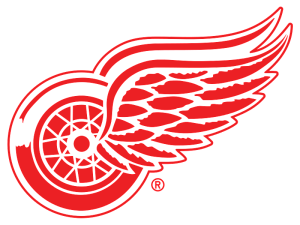 107. LHD Cole Candella (Hamilton, OHL):
107. LHD Cole Candella (Hamilton, OHL): Candella was on his way to a fine draft season when he was shelved with a broken wrist around the middle of the season. He and teammate Ben Gleason are both lefties who took turns alternating roles on the Bulldogs’ top pairing. It was Candella, however, who distinguished himself as the more reliable option, using sound one-on-one technique and a quick transition game to earn the trust of the coaching staff with an expanded role. He can unload a very hard shot, so he played plenty on the power play. We were able to absolve him of any wrongdoing on almost all the goals scored against his squad while he was on the ice, which makes us think he would have been assessed differently had he played with a stronger supporting cast.
 108. LHD David Bernhardt (Djugardens Jrs, Superelit):
108. LHD David Bernhardt (Djugardens Jrs, Superelit): A big, somewhat mobile defenseman with room for improvement who can shoot the puck with authority and help run a power play. Bernhardt won’t blow the doors open with speed, but he’s a smart skater who makes up for his lack of first-step quickness with good instincts and the ability to see plays unfold. He is the perfect option for an organization known to breed quality defenders, and with older brother (and New York Rangers’ draft pick) Daniel leaving Sweden for the London Knights, the chance to coach and mentor the younger Bernhardt without the burden of overseas travel makes the gamble palatable. He was one of the Superelit’s top scoring rearguards this season, finishing second in both assists (28) and points (38).
 109. C/LW Travis Barron (Ottawa, OHL):
109. C/LW Travis Barron (Ottawa, OHL): Barron is a feisty two-way winger who settled into a support role for the 67’s when it became apparent he wasn’t living up to his potential on offense. He has good size to compliment an unquestionable work ethic, and even though he was a bit of a streaky player, Barron was able to stick within Ottawa’s top-six as the games became more important. He was the third overall pick in the 2014 OHL Priority Selection and one of the 67’s top players in the postseason. Barron is bound to find gainful employment in the NHL. The question is in what capacity?
 110. RW Ty Ronning (Vancouver, WHL):
110. RW Ty Ronning (Vancouver, WHL): The Islanders under GM Garth Snow are notorious for going off the board and spending a middle-round pick or two on a reach. But anyone who’s followed the CHL this year knows that Ronning is neither obscure nor a gamble. All signs point towards the diminutive sniper carving out an NHL career, especially with father (and former Islander) Cliff to guide him along. Ty is more of a finisher than a playmaker, and he stepped up when the Giants were hit by a season-ending injury to star forward Tyler Benson in January. Ronning led Vancouver in goals (31), and he played the full season after missing three quarters of 2015 with a broken collarbone. He’s quick on his feet and owns a hard, accurate shot, but concerns with size (5’9, 170) are legitimate as he’s not physical and can be guilty of playing to the outside.
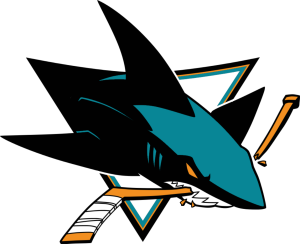 *111. (NYR) C Otto Somppi (Halifax, QMJHL):
*111. (NYR) C Otto Somppi (Halifax, QMJHL): A slick pivot with sound hockey sense and a keen eye for open teammates, Somppi had an up-and-down rookie season for the Mooseheads but still finished among the QMJHL’s top rookie scorers. He’s a solid two-way option and is good on draws, but he needs to get stronger in order to win those ever-important board battles. Somppi is not only fast, but he knows how to properly execute an odd-man rush — an often overlooked skill. He’s one of the better late-round options for running a power play and adding pure skill to a depth chart.
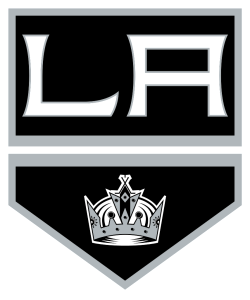 112. LHD Benjamin Gleason (Hamilton, OHL):
112. LHD Benjamin Gleason (Hamilton, OHL): Gleason is another aggressive two-way defender who can be hit or miss with his offense, but plays a generally sound positional game. He’s better at moving the puck himself than making a tape-to-tape stretch pass, and on occasion he’ll dazzle you with a neat fake or two. He doesn’t look like an intimidating force, but Gleason plays with bite and will use his stick to make crease-crashers pay. Gleason played for an overmatched Team USA at the Hlinka but was one of their more physical performers, and he looked comfortable after assuming a top-pairing role for an inexperienced Hamilton club that had trouble scoring and even bigger issues defending.
 113. LHD Dawson Davidson (Kamloops, WHL):
113. LHD Dawson Davidson (Kamloops, WHL): Undersized puck mover with strong instincts and a proclivity to take chances up the ice. Although he’s not big (5’11, 177) and seems to avoid physical contact, Davidson was used in all situations to start the season before seeing his ice time reduced, especially on the PK and critical defensive-zone situations. Puck rushing, beefing up an attack and playmaking are his strengths, while his shot is above-average and used often. Davidson is a sound mid-round option for a team looking for a defenseman to run their power play, or at least help it function properly. He isn’t strong defensively — he needs some help in that regard — but he was one of the WHL’s top scorers among draft-eligible defensemen.
 114. RW Will Lockwood (U.S. U18, NTDP):
114. RW Will Lockwood (U.S. U18, NTDP): Lockwood is near the top of a decent list of draft-eligible sandpaper forwards thanks to excellent straight-line speed and a fearless mindset when engaging opposing skaters. He gets most of his points from a crash-and-bang style that would normally compliment line mates of the finesse variety. Lockwood, however, played most of the season with similar players, yet he was easily one of the NTDP’s most reliable and consistent in that regard. He’ll don Wolverine blue and yellow next season, and when you consider how well he played against NCAA competition in 2016, the transition should be relatively seamless.
 115. C Andrey Svetlakov (CSKA, KHL):
115. C Andrey Svetlakov (CSKA, KHL): Double-overage center who is quite versatile and can be counted on for instant offense. He distinguished himself as Russia’s top two-way option at the world juniors, where Russia came within a goal of winning the gold medal. He’s a strong skater with exceptional balance and he always seems under control, especially on zone entries. But at 6’0, 200 pounds, Svetlakov also plays a physical game that toes the line between dirty and downright outrageous. If there was one Russian-trained forward who is both built and wired for the North American style, it’s Svetlakov.
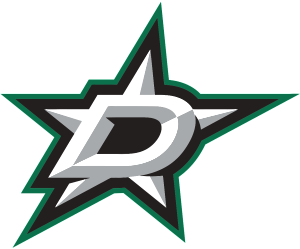 116. G Veini Vehvilainen (JYP U20, Liiga Jrs):
116. G Veini Vehvilainen (JYP U20, Liiga Jrs): There are pros and cons for competing at the world junior championship, where Vehvilainen may have played himself out of getting drafted altogether. However, we don’t think a brief tournament should outweigh a season’s worth of accomplishments regardless of how bad one played in said competition, so we’ll continue to maintain our position that Vehvilainen is one of the top goalie prospects for the 2016 draft. He had an exceptional rookie season in Finland’s elite league, placing fifth in save percentage (0.925) and eighth in goals against average (2.04). From a puck-stopping standpoint, the positioning and stance issues he showed at the WJC were an aberration, as anyone who follows the Finnish league will tell you that one of Vehvilainen’s many strengths is the way he presents himself and the net to the shooter. He loves to challenge and is confident in his glove hand, but he can also be patient and force a shooter into a nothing opportunity. He was passed over in last year’s draft, and the Ducks gave him a look at their post-draft camp.
 117. LW/RW Patrick Bajkov (Everett, WHL):
117. LW/RW Patrick Bajkov (Everett, WHL):One of the WHL’s top two-way players whose talent scale tips heavily in favor of offense. Bajkov is a very good skater who can make plays at high speed regardless of degree of difficulty. He’s feathery on his skates and cuts and weaves his way into open ice rather effortlessly. Playing for a goal-starved offense skews his numbers, but keep in mind that the Silvertips played tight affairs on a nightly basis, and Bajkov was entrusted with late-game situations in addition to assisting the top power play unit. He’s a lethal passer and quite creative, and we get the feeling that he’ll flourish in an up-tempo system.
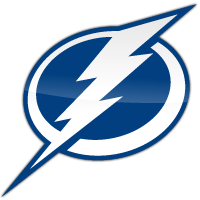 118. C Joona Koppanen (Ilves U20, Liiga Jrs):
118. C Joona Koppanen (Ilves U20, Liiga Jrs): Dominant defensive-minded center with skill who at 6’5 can uses his massive reach to break up play after play. Koppanen has the ability to create and finish plays, but he was an obedient soldier for Finland’s under-18 squads by tackling the tough top-line checking assignments. He’s quite mobile and covers ground in a hurry, using a long stride and good anticipation skills to get to where he needs to be. Koppanen is not as raw as you would think – there are times where he resembles a polished veteran who simply understands the nuances of responsible, three-zone hockey. He leads his man very well, and uses deft stickhandling to either hide the puck when he’s moving down the wall, or drag it around a poke check to open up the ice for himself.
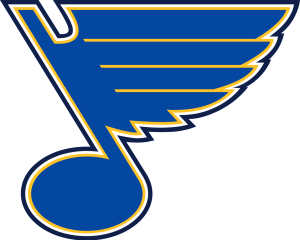 119. C/LW Mitchel Mattson (Bloomington, USHL):
119. C/LW Mitchel Mattson (Bloomington, USHL): Whether you love his game or are indifferent, you can’t deny how enticing a prospect the big-bodied Mattson is. He’s a 6’4 center who simply makes his linemates better, albeit the linemates he had in high school. He opted to ditch the USHL for a return season at Grand Rapids, which obviously benefited from his return. The problem is that we don’t think Mattson himself gained anything from a developmental standpoint, and he looked lost and out of place when he returned to Bloomington for the playoffs. The Blues have a good track record turning average picks into top-end players, so he’s an three-run homer swing this late in the fourth.
 120. C Mikael Hakkarainen (Brookings, NAHL):
120. C Mikael Hakkarainen (Brookings, NAHL): Hakkarainen didn’t get a lot of attention until later in the year, but he’s a hard-working two-way center with sound hockey sense and playmaking ability. He’s an above-average skater who turns well and can maneuver his way out of tight spaces, but there’s still room for both improvement and growth (6’0, 176). His upside likely tops out as a third line center who when called upon can seamlessly fill in for a top-six forward . Hakkarainen can also play wing, and furnishes a heavy, accurate shot while using a variety of fakes and movements to throw the goalie and/or a defender off. He was drafted by the USHL’s Chicago Steel and has a commitment to Providence College. Hakkarainen has a good attitude towards the game and can be trusted with any kind of situation, to include killing penalties and taking defensive zone draws.
 121. LW Carsen Twarynski (Calgary, WHL):
121. LW Carsen Twarynski (Calgary, WHL): Another one of coach Mark French’s hard workers who loves to throw his weight around and provide unrelenting pressure whenever the bad guys have the puck. Twarynski is a decent skater but can cover ground thanks to a long stride, and he likes to fire an above-average shot from anywhere on the ice. He’s one of those “glue” guys who will stand up for teammates and drop the gloves when he has to, but provides a voice in the locker room. Twarynski is a very good penalty killer and can play on the power play as well, but only two of his 20 goals were scored with the man-advantage.
 *94. (VAN) C/LW Jordy Stallard (Calgary, WHL): The Hitmen had a bit of a rebuilding year, which gave this versatile forward the chance to play all over their lineup, to include periods of top-line duty. He played wing most of last season, but he saw more time at the pivot plus a consistent role on the power play in 2016. Stallard can play a physical game, using his NHL build (6’2, 190) to lean on defenders and bang around on the forecheck. His best assets are a pro shot and quick release – he can wire it off of any pass regardless of quality. Stallard’s speed is above average, but his size coupled with the fact that he scored 21 goals without the benefit of playmaking linemates makes him a good sleeper pick in the fourth round.
*94. (VAN) C/LW Jordy Stallard (Calgary, WHL): The Hitmen had a bit of a rebuilding year, which gave this versatile forward the chance to play all over their lineup, to include periods of top-line duty. He played wing most of last season, but he saw more time at the pivot plus a consistent role on the power play in 2016. Stallard can play a physical game, using his NHL build (6’2, 190) to lean on defenders and bang around on the forecheck. His best assets are a pro shot and quick release – he can wire it off of any pass regardless of quality. Stallard’s speed is above average, but his size coupled with the fact that he scored 21 goals without the benefit of playmaking linemates makes him a good sleeper pick in the fourth round. 97. LHD Vojtech Budik (Prince Albert, WHL):In a draft replete with two-way defenders, it would behoove teams to take a stab at the bigger models, especially if they can skate. Budik had a rather successful rookie season with Prince Albert after he was the 17th overall pick in last year’s CHL Import Draft. The stats may not tell a whole bunch (16 points in 70 games), but he was one of the Raiders’ more dependable blueliners defending from the dots down, and served as a crease-clearer on the penalty kill, which was somewhat surprising since he was expected to support the offense. Budik is a very good skater who lacks creativity, but the fact that he can defend and take the puck up ice makes him an attractive option.
97. LHD Vojtech Budik (Prince Albert, WHL):In a draft replete with two-way defenders, it would behoove teams to take a stab at the bigger models, especially if they can skate. Budik had a rather successful rookie season with Prince Albert after he was the 17th overall pick in last year’s CHL Import Draft. The stats may not tell a whole bunch (16 points in 70 games), but he was one of the Raiders’ more dependable blueliners defending from the dots down, and served as a crease-clearer on the penalty kill, which was somewhat surprising since he was expected to support the offense. Budik is a very good skater who lacks creativity, but the fact that he can defend and take the puck up ice makes him an attractive option. 114. RW Will Lockwood (U.S. U18, NTDP): Lockwood is near the top of a decent list of draft-eligible sandpaper forwards thanks to excellent straight-line speed and a fearless mindset when engaging opposing skaters. He gets most of his points from a crash-and-bang style that would normally compliment line mates of the finesse variety. Lockwood, however, played most of the season with similar players, yet he was easily one of the NTDP’s most reliable and consistent in that regard. He’ll don Wolverine blue and yellow next season, and when you consider how well he played against NCAA competition in 2016, the transition should be relatively seamless.
114. RW Will Lockwood (U.S. U18, NTDP): Lockwood is near the top of a decent list of draft-eligible sandpaper forwards thanks to excellent straight-line speed and a fearless mindset when engaging opposing skaters. He gets most of his points from a crash-and-bang style that would normally compliment line mates of the finesse variety. Lockwood, however, played most of the season with similar players, yet he was easily one of the NTDP’s most reliable and consistent in that regard. He’ll don Wolverine blue and yellow next season, and when you consider how well he played against NCAA competition in 2016, the transition should be relatively seamless. 121. LW Carsen Twarynski (Calgary, WHL): Another one of coach Mark French’s hard workers who loves to throw his weight around and provide unrelenting pressure whenever the bad guys have the puck. Twarynski is a decent skater but can cover ground thanks to a long stride, and he likes to fire an above-average shot from anywhere on the ice. He’s one of those “glue” guys who will stand up for teammates and drop the gloves when he has to, but provides a voice in the locker room. Twarynski is a very good penalty killer and can play on the power play as well, but only two of his 20 goals were scored with the man-advantage.
121. LW Carsen Twarynski (Calgary, WHL): Another one of coach Mark French’s hard workers who loves to throw his weight around and provide unrelenting pressure whenever the bad guys have the puck. Twarynski is a decent skater but can cover ground thanks to a long stride, and he likes to fire an above-average shot from anywhere on the ice. He’s one of those “glue” guys who will stand up for teammates and drop the gloves when he has to, but provides a voice in the locker room. Twarynski is a very good penalty killer and can play on the power play as well, but only two of his 20 goals were scored with the man-advantage.